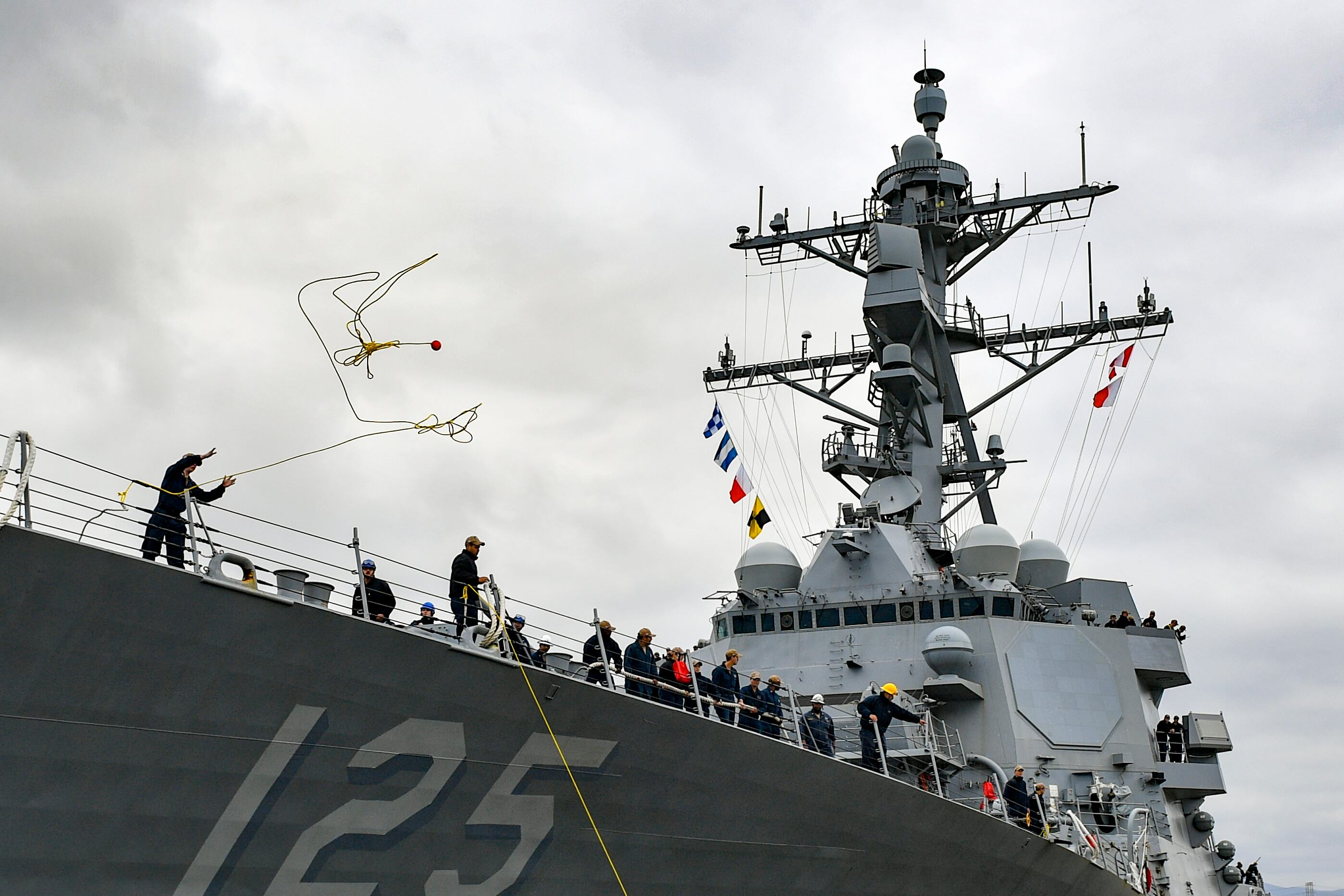ARLINGTON, Va. — The U.S. Navy’s newest shipboard radar has spotted targets older radars cannot during two recent tests, according to the Program Executive Officer for Integrated Warfare Systems.
Rear Adm. Seiko Okano told Defense News in a December interview the Navy learned a lot from these major test events — the first-ever at-sea live fire test in September and an air raid test event in December — aboard the Flight III Arleigh Burke-class destroyer Jack H. Lucas.
The Raytheon-made AN/SPY-6 radar “performed as we expected, which is great,” she said, repeatedly calling its performance “fantastic.”
The new air and missile defense radar previously was used in a range of land-based tests and had some at-sea run time during Jack Lucas’ earlier sea trials. That work culminated in the event in September, where the destroyer tracked a target with the SPY-6 and then shot it down with a Standard Missile-2.
Mike Mills, Raytheon’s senior director of naval radar programs, said Jack Lucas will in the coming weeks sail to Hawaii, where it will continue testing its new radar ahead of a planned August declaration of initial operational capability.
Okano noted the radar had only seen about 30 days of at-sea testing at the time of the interview. The Navy and Raytheon will continue learning about what the radar is capable of detecting during the upcoming developmental testing period.
“Whenever you put a radar out to sea, it’s just putting her through its paces [and] tuning the radar. You’re tuning it for the environments: a whole bunch of clutter or atmospherics or whatever that is — you’re adjusting the sensitivity of the radar because you’ve got a really sensitive instrument” that may be picking up more than the sailors aboard need to see, she added.
Informing a family of systems
SPY-6 is a family of radars. The Flight III destroyers were designed around having the SPY-6(V)1 air and missile defense radar, which is the largest and most capable radar of the family.
SPY-6(V)2 is a smaller rotating enterprise air surveillance radar that will go aboard amphibious ships and the Nimitz-class aircraft carriers. The first (V)2 radar is already installed on San Antonio-class amphibious transport dock Richard M. McCool Jr., which used the radar at sea during its recent builder’s trials.
(V)3 is a fixed enterprise air surveillance radar that will go aboard frigates and Ford-class aircraft carriers. The first one is already installed aboard new carrier John F. Kennedy, which is still in construction. Raytheon will help activate the radar this spring, Mills said.
(V)4 is a smaller air and missile defense radar that’s being backfitted onto Flight IIA Arleigh Burke destroyers through an upgrade program called DDG Mod 2.0.
The first destroyer to go through this program, the Pinckney, received its Surface Electronic Warfare Improvement Program Block III system in a recent shipyard availability at the General Dynamics NASSCO yard in San Diego. Following more testing and a deployment, the ship will return to receive the SPY-6(V)4 in a second availability. Mills said that will likely happen in late 2026.
Eventually, the Flight IIA ships will receive both the radar and the electronic warfare package in the same two-year yard period, DDG Mod 2.0 program manager Capt. Tim Moore said in a presentation at the Surface Navy Association’s annual conference in January.

Mills said the lessons learned on Jack Lucas — including the Navy and Raytheon’s efforts to fine-tune the radar and tweak its software — will apply to the other variants. When Richard McCool and John F. Kennedy begin their at-sea testing, he said, the radars should require less adjustment.
Navy SPY-6 program manager Capt. Jesse Mink said in a separate presentation at the conference that “the idea is, we continue to learn every time a ship goes to sea, every test that occurs — maybe it’s not on the same ship class, maybe it’s not the same version, but that code will be reused so that we don’t have to test it again.”
On the production side, Okano said Raytheon’s heavily automated production facility is churning out radars, such that “we have them now stacked up in warehouses.”
Mills said the company has nearly finished the work awarded in the first low-rate initial production contract signed in 2017.
In 2022 and 2023, the Navy awarded Raytheon hardware production and sustainment contract options — essentially a full-rate production contract, but not formally called that until the radar reaches initial operational capability, Mills said. He said he expects the next in the coming months and then a final option in March 2025, ahead of an early 2026 full-rate production contract to allow for continuous production.
Megan Eckstein is the naval warfare reporter at Defense News. She has covered military news since 2009, with a focus on U.S. Navy and Marine Corps operations, acquisition programs and budgets. She has reported from four geographic fleets and is happiest when she’s filing stories from a ship. Megan is a University of Maryland alumna.







